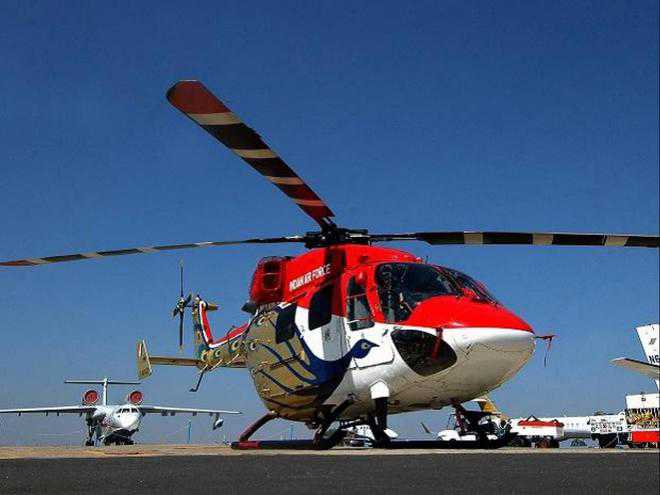Vijay Mohan
Tribune News Service
Chandigarh, August 27
Even as public sector giant Hindustan Aeronautics Limited (HAL) looks at boosting the production of its Dhruv advanced light helicopter, certain airworthiness issues have cropped up that have prompted the Directorate General of Civil Aviation (DGCA) to draft a set of new operating procedures to cater to specific situations that the helicopter’s civilian variant may encounter.
“Multiple occurrences of abnormal sound/possible surge and power loss of TM 333-2B2 engines installed on Dhruv civil helicopter along with vibration and jerks in cockpit during flight” is the reason stated by the DGCA for formulating the new guidelines (see box) a few days ago. The corrective procedures are also applicable to situations where split in torque or on-ground flame is observed. The issues were first flagged by the HAL itself in an Alert Service Bulletin issued in June 2019.
The DGCA has sought comments on the new procedures from operators and stakeholders by September 15.
There have been a dozen known instances of accidents and incidents involving the Dhruv in India and abroad, some of which have also resulted in fatalities. Most recently, three soldiers were injured when they fell while rappelling from a Dhruv during the Army Day rehearsals after the boom to which the rope was fixed broke due to material failure.
Designed and developed indigenously as a multi-role, multi-mission, new-generation helicopter in the 5.5 tonne weight class, Dhruv is produced in military and civilian versions. Over 250 machines, mostly for defence forces, have been produced and these have collectively logged about 2.5 lakh flying hours. At a workshop in June to attract private players for the Dhruv programme, HAL’s Chairman-cum-Managing Director R Madhavan said the helicopter had a huge potential in the domestic and global civil market.
Fresh regulations for flying Dhruv
- Amid above issues, pilots are to lower the speed below 80 knots
- Have to maintain lower power settings, avoid large and rapid changes to flight parameters
- They are also to land as soon as possible using available power
- Affected engine is to shut down immediately if the aircraft is still on ground
- If abnormal sound, banging noise or vibration continues, engine is to be shut down using emergency procedures and single engine landing protocol is to be followed
Problems the copter is encountering
- 1 Multiple occurrence of abnormal sound or possible surge
- 2 Power loss of TM 333-2B2 engines installed on copter
- 3 Vibration, jerks in cockpit during chopper’s flight
Unlock Exclusive Insights with The Tribune Premium
Take your experience further with Premium access.
Thought-provoking Opinions, Expert Analysis, In-depth Insights and other Member Only Benefits
Already a Member? Sign In Now










